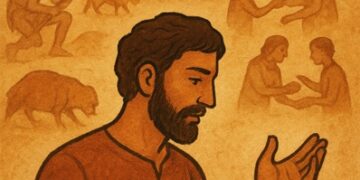By: Zoya Hasan
The political discourse, as Assembly elections approach, is slipping to new lows. Addressing a rally in Madhya Pradesh recently, the president of the Bharatiya Janata Party (BJP), Amit Shah, once again described infiltrators as “termites”. Earlier, speaking at a rally in Rajasthan, he said that he was confident that the BJP would win every election despite incidents of mob lynching, naming Mohammed Akhlaq. At the party’s national executive meeting last month, he had declared that if the BJP comes to power in 2019, it would stay put in office for another 50 years.
A clear strategy
But what is the basis of this self-confidence in the face of the poor record in office and the unravelling of the party’s own carefully constructed social constituency? This self-assurance stems from the belief that a politics of polarisation will pay dividends. Development and corruption were two major poll issues in 2014 when Narendra Modi projected himself as the harbinger of development. Both these issues have lost their appeal as non-Hindutva supporters who backed the BJP on the promise of development are disenchanted. The BJP appears to be refurbishing its strategy with greater prominence given to Hindutva, reflected in the high-pitched communal rhetoric of the past few months.
That this strategy is driven from the top is evident from the manner in which the BJP president has been focussing on the National Register of Citizens (NRC) issue, which is ideally suited to create polarisation. Mr. Shah has set the pace for this. While raising the issue of the NRC in a rally in Gangapur town in Sawai Madhopur, he said that ‘crores of illegal infiltrators’ have entered the country like ‘termites’ and should be ‘uprooted.’ He has been sticking to this theme in several speeches, warning for instance: “BJP sarkar ek-ek ghuspaithiye ko chun-chun kar matdata suchi se hatane ka kaam karegi (the BJP government will remove every infiltrator from the voters’ list).”
The ‘chun-chun ke nikalenge’ threat to the illegal Bangladeshi immigrants becomes clearer when viewed together with the proposed Citizenship (Amendment) Bill of 2016. This Bill would permit Hindus, Sikhs, Buddhists, Jains, Parsis and Christians from Afghanistan, Pakistan and Bangladesh to be eligible for Indian citizenship, but not Muslims, and if passed would violate Article 14 guaranteeing equality before law. Through this, the BJP is aiming to polarise Indians to convince them that what is rightfully theirs is being snatched away by ‘outsiders’. Hence, Mr. Shah is bringing up the issue in rally after rally to target minorities. At a public meeting in Kolkata, on August 11, he asked: “Are the Bangladeshi infiltrators a security threat to this country or not?”
Such acidic comments are echoed by other BJP leaders in their mobilisation campaigns. The sharpened focus on Bangladeshi immigrants, the NRC, the 2106 surgical strikes on Pakistan, to name a few such issues, are an indication of the tone and tenor of the BJP’s combative political strategy for 2019. The NRC issue is particularly important for its political agenda as it signals the shifting relationship between the Indian state and its diverse citizens and communities on questions of citizenship, equality and democracy.
Several commentators point out that the BJP has begun to forefront a combative strategy because of the growing feeling that the ruling dispensation is unlikely to repeat the 2014 performance. At the same time, it’s important to remember that polarisation has been an indispensable part of its campaign strategy, and is embedded in its ideology. For the BJP, creating a Hindu-Muslim divide is at the heart of its quest for a Hindu consolidation. Many State elections after 2014 have witnessed aggressive pitching of divisive issues rather than development. This happened during the Gujarat and Uttar Pradesh elections in 2017. Same was the case in Bihar in 2015 and Karnataka in 2018. Moreover, this type of campaign is always conducted at the grass-root level by the RSS-BJP cadres even when on occasion the top leadership is speaking a less divisive language. Whether the communal dimension should be highlighted by the leaders in their speeches depends on the assessment of the ground situation and its intensity varies from phase to phase of the election campaign.
Among the lynchings
From Independence, India’s politics had taken the form of a consensus pertaining to issues about nationhood and majority-minority relations. Clearly, that consensus has broken down, with the BJP keen to break away from the traditional national discourse. In the past too, religion wasn’t divorced from politics since it is part of the political landscape, but it is certainly more strident now. One important reason for the democratic regression is the majoritarianism promoted by the BJP as the dominant ideology since it came to power. The second reason is growing incidents of mob lynchings, which have emerged as a critical element of the new political order. It is not conventional Hindu-Muslim violence but targeted violence that is no longer episodic but a continuum, with lynching of Muslims on issues ranging from allegations of cow slaughter to love jihad to petty theft. Most of these incidents are perpetrated by vigilante militias and are the direct result of the communal atmosphere that the Hindu right has created, leaving little scope for recourse to justice against persons who commit these hate crimes.
But it is not only Muslims who are the targets of violence, most marginalised groups and anyone who speaks on their behalf or for justice is generally under attack, while those who make up a lynch mob have actually been feted by a Union minister. Also, anybody who is critical of Hindutva or the politics of the current establishment is branded as anti-national. This labelling draws sustenance from a conflation of communalism and nationalism since nationhood under the BJP government is defined more by what it excludes than what it includes. It is a well-thought-out strategy: speak against the government and you’re anti-national and anti-Hindu.
Threat to plurality
The polarisation strategy is an attempt to remove political plurality and in a sense pave the way for a one party, one leader-centric system which will weaken the foundations of our vibrant democracy. The job of the Opposition parties, in particular the Congress, in these circumstances is cut out: it has to press ahead with political adjustments to counter communal polarisation. Besides bringing together disparate parties, the Opposition must build a narrative that can hold some political interest for voters. The ideological thrust of this counter-narrative has to focus on safeguarding fundamental constitutional principles which have become points of contention and contestation, for example, nationalism, secularism and social justice. The Left has to play a leading role in building this narrative and any hesitation on its part will be damaging to both itself and to the country.
Zoya Hasan is Professor Emerita, Centre for Political Studies, Jawaharlal Nehru University
Courtesy The Hindu





